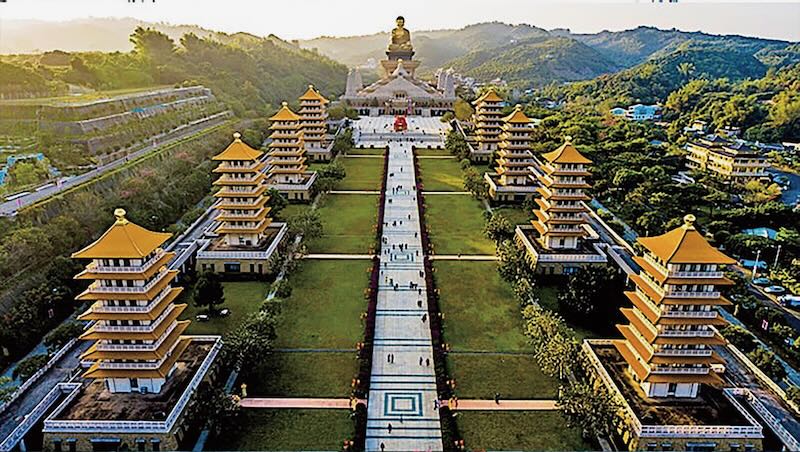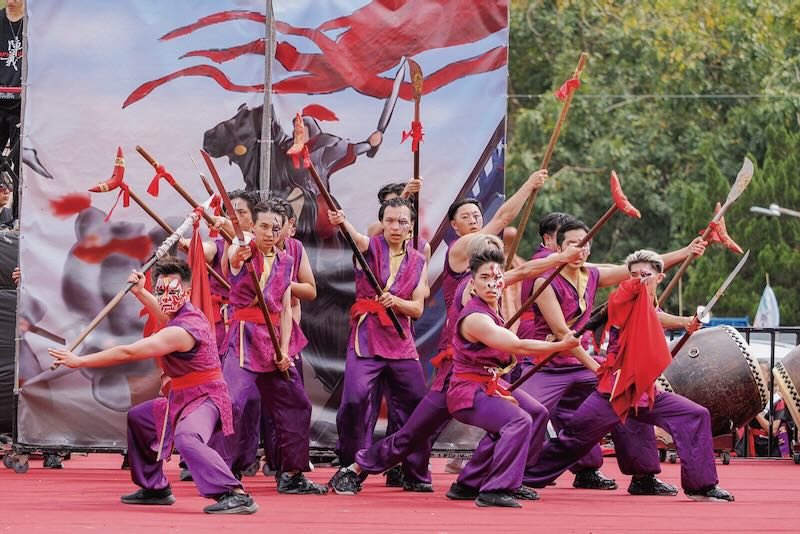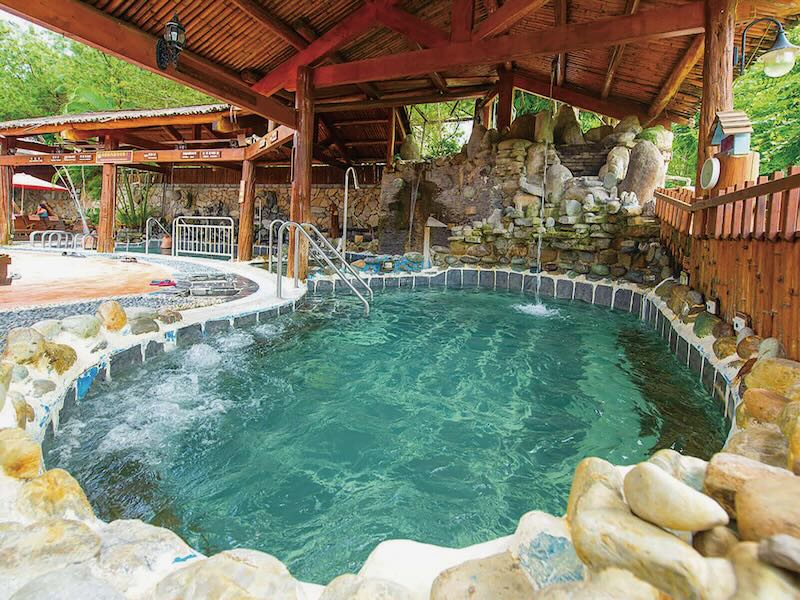
Taiwan is a relatively small island – slightly larger than Maryland and about half the size of Tasmania. A drive from its northernmost point to the southern tip takes roughly seven hours, though Taiwan’s high-speed rail makes the journey nearly as swift by public transit.
Despite its size, Taiwan’s north and south are distinct. The south is less densely populated and often described as more traditional. With its flatter terrain and warmer climate, it is also the country’s primary rice-producing region.
The harbor metropolis of Kaohsiung, the south’s principal population center, has in recent years emerged as a popular destination for oceangoing cruise ships. Kaohsiung now has two cruise terminals, both of which are conveniently close to Circular Light Rail stations.
When it comes to excursions, cruise passengers arriving in Kaohsiung are spoiled for choice. Tourist attractions within 2 km include the Former British Consulate and Kaohsiung Lighthouse. The consul’s former residence has a superb hilltop location, while the lighthouse has been guiding vessels for well over a century. For families, Shoushan Zoo’s collection of native and exotic animals can be a good choice.
Several of the old warehouses close to Kaohsiung’s docks have been repurposed as cultural-creative hubs, of which Pier-2 Art Center is the best known. The 110m-long Great Harbor Bridge connects two warehouse clusters; visitors who look to the east as they cross it will see both the mouth of Love River and Kaohsiung Music Center, a striking honeycomb-patterned structure that has become a leading concert venue.
From Pier-2, it is just a short stroll to Hamasen Railway Cultural Park, a former marshaling yard that now serves as an outdoor museum where retired rolling stock is displayed alongside photogenic public art. It is also an ideal location for kite-flying.

Other attractions deserve an entire day. Fo Guang Shan and the adjacent Buddha Memorial Center are fascinating landmarks where visitors can appreciate sublime religious art while learning about the role Buddhism plays in 21st-century Taiwan. Seeing every part of the sprawling complex in under three hours is unrealistic.
In addition to being Taiwan’s most famous monastery, Fo Guang Shan always hosts intriguing and informative exhibitions. The Buddha Memorial Center is a truly stupendous edifice built to preserve and honor a tooth believed to have belonged to the Buddha himself. This sacred relic was entrusted to Fo Guang Shan’s founder by a Tibetan lama who had rescued it during China’s 1959 invasion of Tibet. There are places to eat in both the monastery and the memorial center, so staying from mid-morning until late afternoon is an option.
Fo Guang Shan is an hour’s drive from Kaohsiung’s cruise terminals, and a day trip to it can be combined with a quick look at the quaint inland towns of Qishan and Neimen. The former’s “Old Street” is a step back several decades in time. The latter is known as a center of Taiwan’s unique bando banqueting culture, and for a spectacular springtime festival that dates from an era of continual insecurity.
This event, the Neimen Song Jiang Battle Ritual, features teams called songjiang zhen (“battle arrays”) that trace their origins to community defense units set up back in the 18th and 19th centuries, when banditry was a serious problem throughout Taiwan, and violence occasionally erupted along clan or ethnic lines. Since 2015, Neimen’s Song Jiang Battle Ritual has been recognized by Taiwan’s Ministry of Culture as a national-level intangible cultural heritage asset.

These days, shrine-affiliated battle arrays drill in temple forecourts, carrying pitchforks, shields, staves, and blunt swords, perfecting routines that are part performance, part ritualized dueling.
Many of the teams that participate in the Song Jiang Battle Ritual are motivated by religious devotion, as the event is just one element in a series of ceremonies held each spring to celebrate the birthday on the 19th day of the second lunar month of Guanyin, the Buddhist Goddess of Mercy and the female form of Avalokiteshvara. Others are there to pursue the cash prizes that go to participants who show exceptional physical dexterity or striking creativity. In recent years, the event has welcomed competitors of both genders from outside the world of temple culture, stimulating the local dance scene.
The 2025 edition of the Neimen Song Jiang Battle Ritual is scheduled for March 28 to April 6. The principal venue will again be Shunxian Temple next to Provincial Highway 3. Travelers relying on public transportation can take buses to/from Qishan or Tainan.

Tourism in this part of Taiwan has taken a step forward with the creation of the Kaohsiung Destination Marketing Organization, an alliance that brings together hoteliers, homestay operators, tour companies, government entities, and other stakeholders eager to promote the city and adjacent townships in Pingtung County. A major portion of this region falls within the Maolin National Scenic Area, which is managed by the Tourism Administration under the Ministry of Transportation and Communications (MOTC).
Leveraging the Kaohsiung-Pingtung area’s geographical and cultural strengths, the organization is developing travel concepts under four headings: Mountains, Sea, City, and Aborigines.
Seeing the thoroughly modern buildings that dot the city’s waterfront, cruise ship passengers sailing into Kaohsiung might not suspect that, a short distance inland, there are breathtaking mountain landscapes and isolated villages inhabited by members of Taiwan’s Austronesian indigenous minority – or that Kaohsiung is an excellent venue for meetings, incentive travel, conferences, and exhibitions (MICE).
The Ministry of Transportation and Communications’ Tourism Administration and the Ministry of Economic Affairs’ International Trade Administration are collaborating to encourage international travelers attending MICE events in Taiwan to explore the country through its Travel Incentive Program. In 2025, the Program offers travel incentives of up to NT$2,000 per person per visit, and a maximum of NT$600,000 per proposal. The goal is to boost the development of both MICE and tourism industries, thereby promoting economic growth.
TOURIST INFORMATION
Travelers planning to attend the 2025 Song Jiang Battle Ritual or explore the Kaohsiung area can gather additional information from the following websites:
Kaohsiung City Government Tourism Bureau (multilingual website)
Maolin National Scenic Area (multilingual website)
Neimen Song Jiang Battle Ritual
Tourism Administration (MOTC) (multilingual website)
Meet Taiwan (MICE) (bilingual website)
The 24-hour tourist information hotline (0800-011-765) is toll-free within Taiwan and staffed by speakers of English, Japanese, and Chinese.





